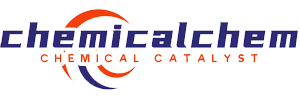PVC stabilizer Usually inorganic or organometallic compounds, the term itself indicating that they contain cations, or organic compounds, usually classified by chemical class. Typically, inorganics and metalloorganic compounds are the basic (or primary) stabilizers, while organics are secondary. Or auxiliary stabilizer.
Stabilizers are mainly classified according to tin, lead and bloodMixtures of Group A metals such as barium, copper and zinc
Tin stabilizer: a tetravalent tin compound containing 1 or 2 carbon-tin bonds, and the remaining valence bonds are saturated with oxygen or sulfur-tin anion bonds. It is the most effective stabilizer for PVC. These compounds are organic tin The product of the reaction of oxides or organotin chlorides with appropriate acids or esters. Stabilizer synergistic mixtures are very common and usually include various fluid-based organotin compounds and wave-based salts (compounds) as well as auxiliary additives such as zinc Soaps, phosphites, epoxides, glycerides, UV absorbers, antioxidants, etc. Obviously, most synergistic compositions are specialized, so they have not been found to have universal commonalities.
Organotin stabilizers are divided into two categories: sulfur-containing and sulfur-free. Sulfur-containing stabilizers are outstanding in all aspects of stability, but have similar taste and cross-contamination problems to sulfur-containing compounds. Typical sulfur-containing anions are : Thiol compound——SR. Mercaptoate——S (CH) nCOOR mercapto acid Esters – S(CH)nOCO or elemental sulfur. Non-sulfur anions are usually based on maleic acid or maleic acid half-esters, and non-sulfur organotins are less effectivethermal stabilizers , but it has good light stability.

Lead stabilizers: Typical lead stabilizers include the following compounds: 2 Lead stearate, hydrated tribasic lead sulfate, dibasic lead phthalate, dibasic lead phosphite. While serving as a heat stabilizer, lead The compound does not damage the excellent electrical properties, low water absorption and outdoor weather resistance of PVC materials. However, lead stabilizers have disadvantages, such as being toxic; causing cross-contamination, especially with sulfur; producing lead chloride, which Forms streaks on the finished product; has a high specific gravity, resulting in an unsatisfactory weight/volume ratio. Lead stabilizers often make PVC products immediately opaque and quickly discolor upon continued heating.
Despite toxic and ecological drawbacks, these stabilizers are widely used For electrical insulation, lead is the first choicePVC stabilizerBased on the combined effect of this stabilizer , many flexible and rigid, homopolymer and copolymer formulations are possible.
MixedMetal Stabilizers: Mixed metal stabilizers are aggregations of various compounds, usually designed according to the specificPVC use and user. This type of stabilizer has been prepared by adding barium succinate separately. and cadmium palmitate to develop barium soap, cadmium soap, zinc soap, organic phosphite, plus antioxidants, solvents, extenders, peptizers, colorants, UV absorbers, brighteners, viscosity Control agents, lubricants, tackifiers, and artificial fragrancesIn this way, there are quite a few factors that can affect the effect of the final stabilizer.
Group IIA metal stabilizers, such as barium, calcium, and magnesium, are not Protects early color, but provides a good long-term heat stabilizer for PVC. PVC stabilized in this way starts out yellow/orange, then continues to be heated, gradually turns to brown/brown, and finally turns black.
Cadmium and zinc compounds were first used as stabilizers because they are transparent and can maintain the original color of PVC products. The long-term thermal stability provided by pot and zinc is much less than that of barium compounds. Complete degradation occurs suddenly without warning.
In addition to being related to the metal ratio, the effect of barium-steel stabilizer is also related to its anion. Stabilizer anion is the main factor affecting the following properties: lubricity, migration, transparency, change of pigment color, andPVC Thermal stability, etc. The following are the anions of several common mixed metal stabilizers: 2-ethylhexanoate, phenolate, benzoate, stearate. With the innovation of processing technology and the necessity of use, calcium-zinc stability Agents have developed. Initially, allPVC food packaging relied on government-approved calcium soaps and zinc soaps. In order to meet consumer needs and develop market potential, PVC formulas using this less effective stabilizer were designed. And melt making equipment auxiliary stabilizers can be used with these soaps. Dihydropyridines and diketones are the latest auxiliary additives.

 微信扫一扫打赏
微信扫一扫打赏

